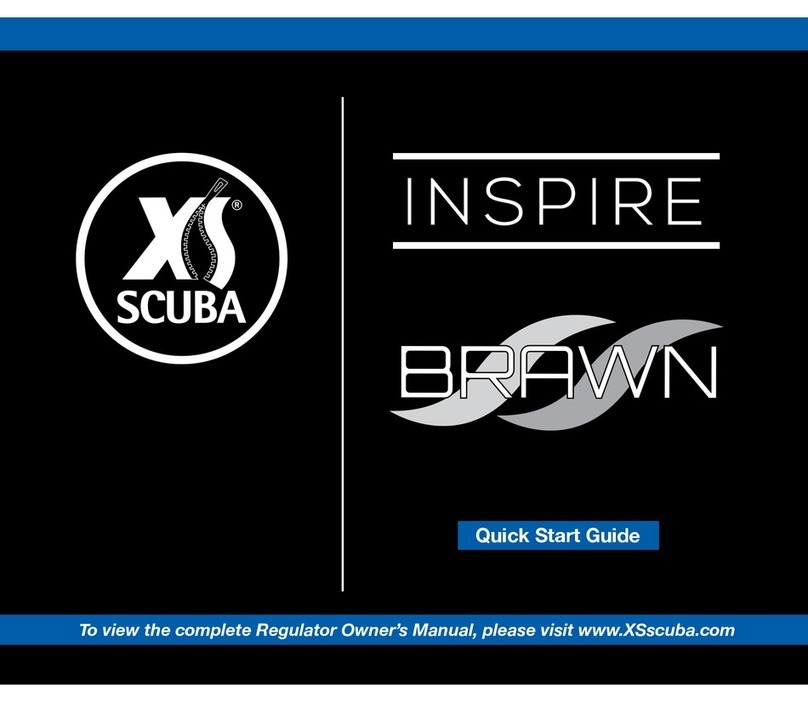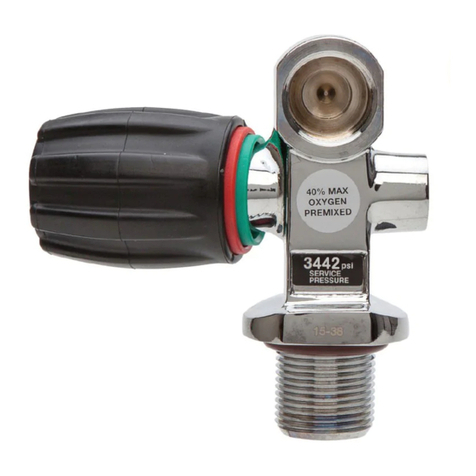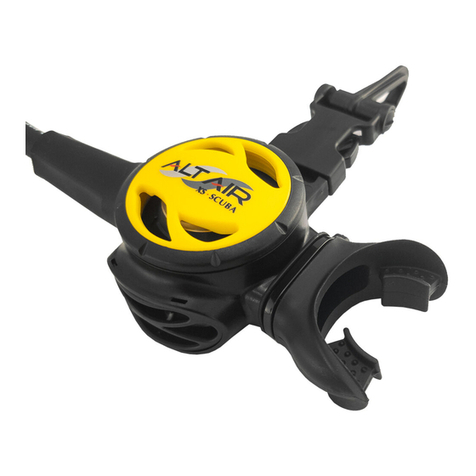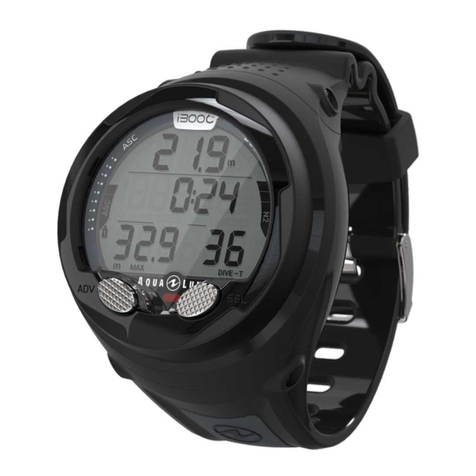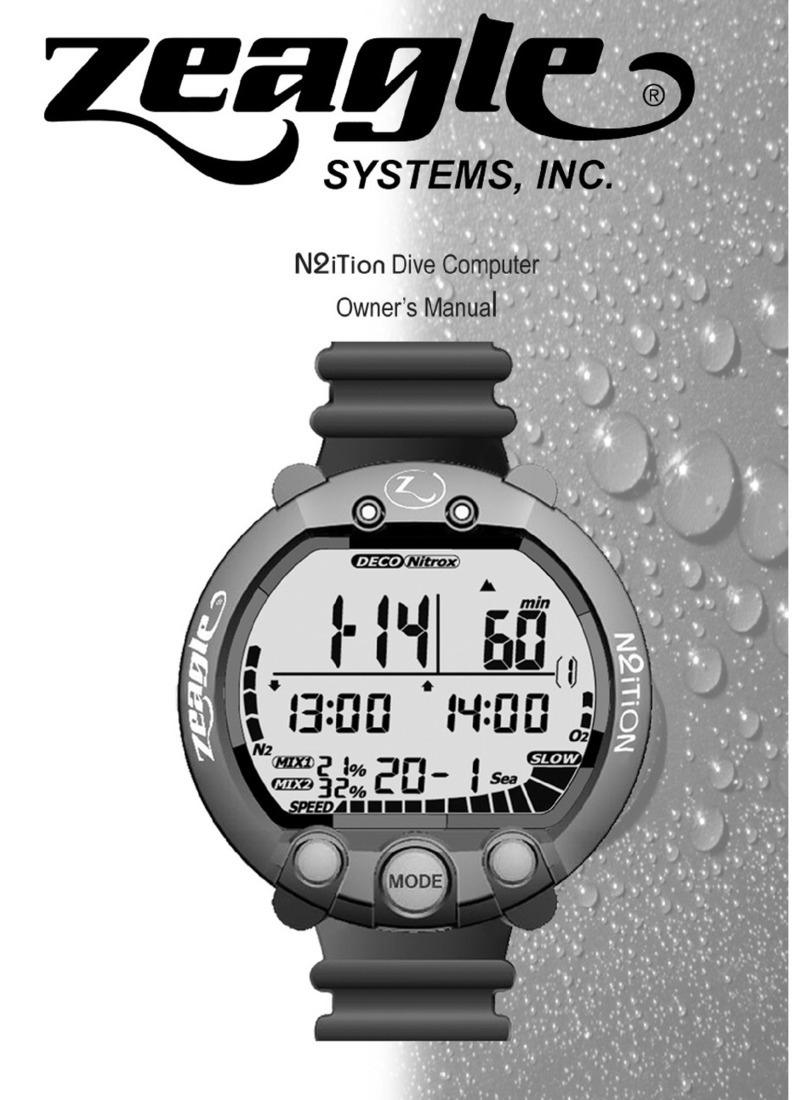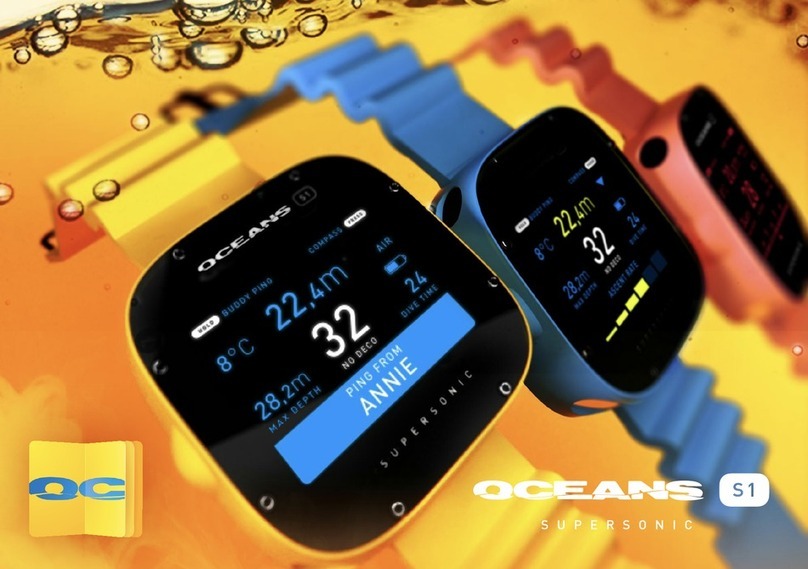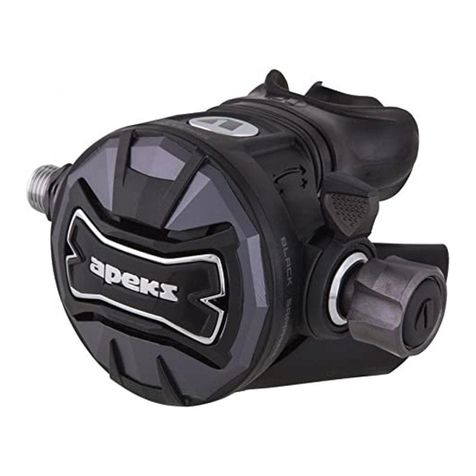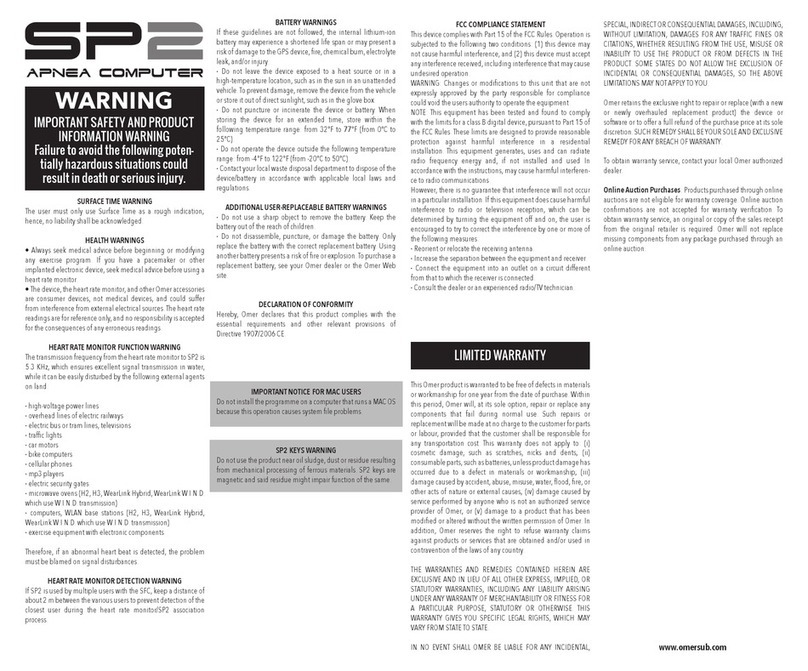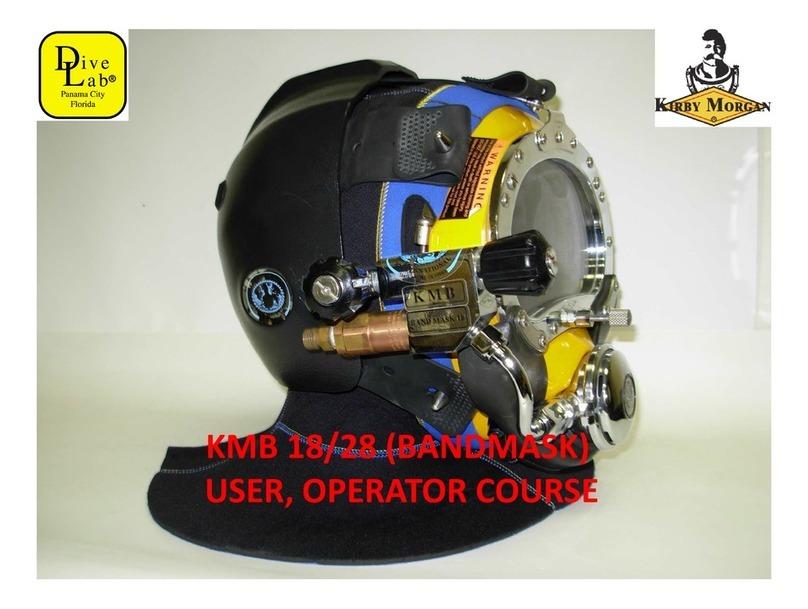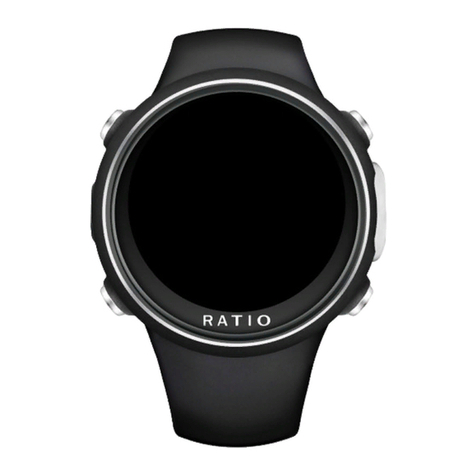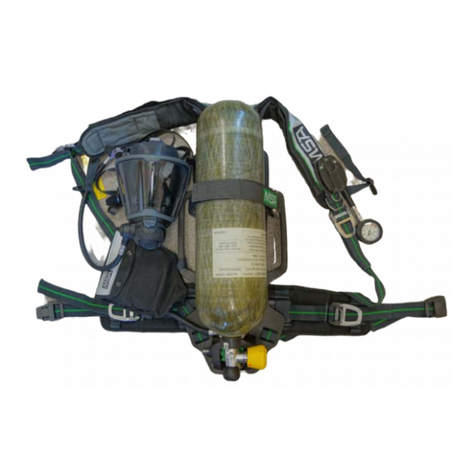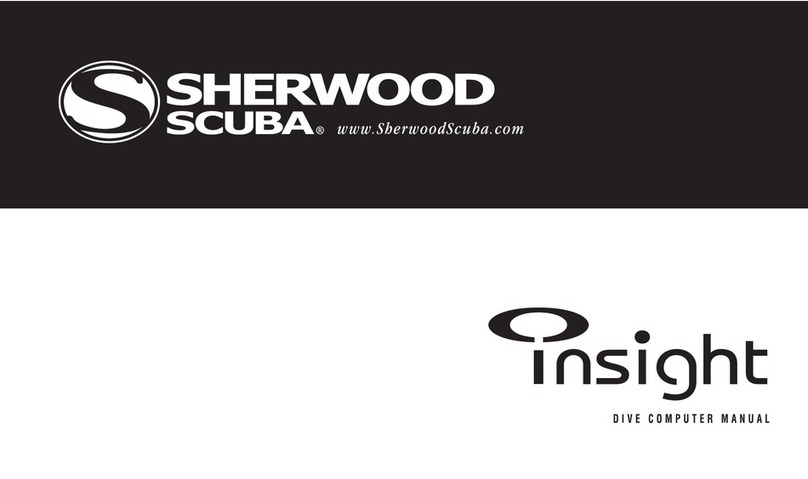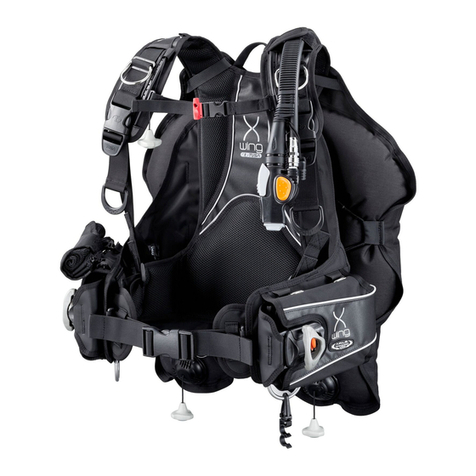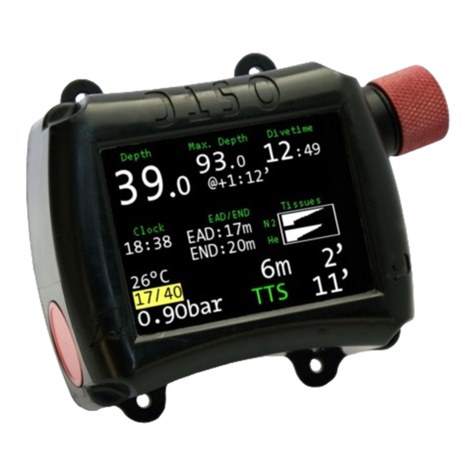
SeaAir Regulator
10
SeaAir Regulator Service and Repair Manual
der any circumstances, use an adjustable wrench or an open
end wrench that does not fit completely over the flats on both
sides. Doing so may result in permanent damage to the yoke
retainer, requiring its replacement.
b. Turn the yoke screw counter-clockwise to remove it from
the yoke, and set aside the breaker bar and socket.
c. Unscrew the yoke retainer counter-clockwise to remove
from the body, along with the yoke and saddle(10).
d. Remove the main seal O-ring(9) from the yoke retainer.
Discard the O-ring and do not reuse, regardless of its condi-
tion.
e. While holding the yoke retainer secure, apply a pair of Snap
Ring Pliers to remove the retaining ring(5) from the yoke
retainer (see Fig. 3). Tap out the lter(6), and remove the
O-ring(7) inside with a brass O-ring tool. Discard the lter
and O-ring, and do not reuse either part regardless of their
condition.
6. Disassembly of the DIN Connector
a. Secure the rst stage in the vise with the DIN connector fac-
ing straight up. (See Fig. 4.)
b. Apply a 4" hex key to the DIN retainer(4f), and turn it
counter-clockwise to loosen and remove from the body,
along with the handwheel(4a) and saddle(4d).
c. Remove the DIN retainer from the handwheel, and then re-
move and discard: the lter(4g) and both O-rings(4e&4h).
Do not attempt to reuse these parts.
c. Closely inspect the condition of the DIN retainer and
handwheel to ensure that the threads are free of any burrs or
other damage. If thread damage is found that could impair
a proper connection, it is important to replace the part with
new.
d. Inspect the condition of the thrust washer(4b), spacer(4c),
and saddle, and replace if needed.
7. Resecure the rst stage in the vise with the body(18) positioned
vertical, and the LP swivel facing down.
8. Apply a 4" hex key to the HP seat retainer(11) and turn it coun-
ter-clockwise to loosen and remove (see Fig. 5). Remove and
discard the O-ring(12).
9. Using a brass O-ring tool, carefully li out the O-ring(14) inside
the HP chamber (see Fig. 6). Be careful to avoid touching the
exposed seating edge of the piston sha. Discard the O-ring,
regardless of its condition.
10. While holding the HP seat retainer secure with a cloth covering
Fig. 3 – Removal of Filter Retaining Ring
Fig. 4 – Removal of DIN Retainer
Fig. 5 – Removal of HP Seat Retainer
